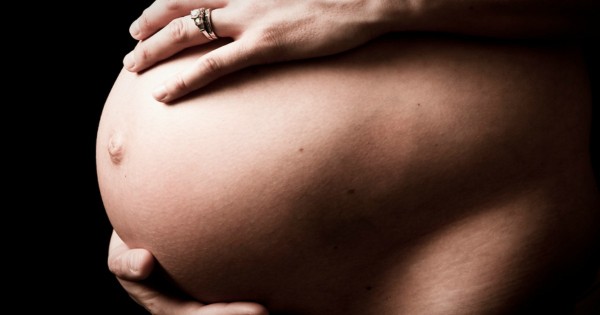It’s no secret that your body goes through a lot of changes during pregnancy. From the giveaway change in your stomach size to the rollercoaster of hormones, there’s a lot going on.
We now know pregnancy ‘glow‘ is a legitimate thing, but what about the, ahem, less pleasant changes to your skin?
Here are the four conditions you may not know about.
1. Darkened skin.
It’s not uncommon to find certain spots on your skin have darkened.
“Linea nigra (darkened skin in a line up and down the belly button) and darkening of the nipples and areola are very common and is from the pregnancy hormones”
“After delivery, this should slowly resolve.”
Blotchy pigmentation known as melasma or chloasma can also appear on the cheeks, jawline and neck.
“The pigmentation usually fades a few months after delivery but it can persist, requiring lightening cream treatments”
“Some women do also notice that their moles darkened with pregnancy and breastfeeding. This can be a completely normal occurrence but women should see their GP or dermatologist if they have any concerns as melanoma during pregnancy does happen.”
2. Lesions.
These can include skin tags, angiomas (benign blood vessel overgrowth in the skin) and seborrheic keratosis (warty brown lumps on the skin).
While they might be unpleasant, they’re usually nothing to worry about.
“These are all benign lesions and some may resolve spontaneously after pregnancy,” says Dr Dinh.
“Women can also get spider veins on the legs with pregnancy. This happens because of the pregnancy hormones and also the increased volume of blood in pregnancy causes significant pressure on the vasculature and causes these small blood vessels to swell.”
3. Stretch marks.
Nothing new, but something perhaps more of us should embrace.
“Striae (stretch marks) happen to a lot of women during pregnancy due to our amazing skin stretching to accommodate the growing baby. Common areas for striae include the breasts, abdomen and thighs,” says Dr Dinh.
“While there is no evidence that application of creams reduces the onset of stretch marks most doctors would still recommend applying a good quality moisturiser or vitamin E cream or oil to prone areas.”
Exacerbating existing conditions.
“In pregnancy as the baseline body temperature rises, this can make any existing conditions worse. For example, people with eczema may note their eczema is worse with pregnancy as they are feeling hot all the time and heat is a trigger for eczema”
“Women can get dry skin during pregnancy, and dry skin is itchy skin. As the baby bump gets larger and larger, it can be hard for women to physically apply their normal moisturisers to their skin themselves and this, in itself, can lead to dry and itchy skin.”
Polymorphous eruption of pregnancy.
This is a condition where small, itchy lumps appear on the abdomen within the stretch marks around the belly button in the last three months of pregnancy and can spread to the trunk and legs.
It is thought to be related to the stretching abdominal skin and is most common in first pregnancy where the most stretching occurs.
“Patients find the rash very itchy and this can be managed symptomatically with moisturiser, topical steroid and anti-histamines. It usually resolves a few weeks after delivery”
Pemphigoid gestationis and cholestasis of pregnancy
These are more serious rashes indicated by itchiness that in rare cases lead to premature delivery of the baby.
“Pemphigoid gestationis is a rare auto-immune condition where there is an itchy rash and also blisters on the abdomen and rest of the body. It usually presents mid to late -pregnancy (13-40 weeks)”
“Cholestasis of pregnancy affects about one per cent of pregnancies and causes itchiness during the second and third trimesters with abnormal bloods of liver enzymes and bile acid salts.”
Both are hormonally driven, can be treated both orally and topically and usually disappear after delivery.
“With all pregnancy rashes, people need to ensure that any medications or cream (both prescription and over-the- counter) are safe for use in pregnancy. The gold standard for this is to usually ensure that medications are ‘category A’ in pregnancy and breast-feeding,” advises Dr Dinh.
“Finally, if there is any doubt about the diagnosis, please do not hesitate to see your GP or dermatologist.”
Credits:mamamia








